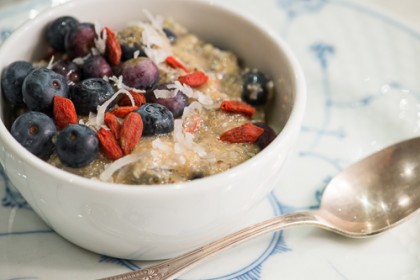Malabsorption Syndrome is the inability of the intestines to absorb nutrients during digestion.
“The most common symptoms of malabsorption are anemia with weakness and fatigue due to inadequate absorption of iron, folic acid and B12,” 1 diarrhea, a bloated abdomen and excessive gas, weight loss despite adequate calories, muscle cramping (due to low levels of calcium, vitamin D and potassium) and muscle wasting (due to protein malabsorption.)
Celiac disease and non celiac gluten intolerance as well as lactose intolerance are malabsorption syndromes triggered by common foods. If you have vitamin deficiencies which do not respond to supplements or growth issues (low muscle tone, failure to thrive and grow) you should try to determine if you are it is a problem with absorption. In our family we had many overlooked symptoms of malabsorption syndrome including: late walking, low muscle tone (“benign congenital hypotonia”), sensory problems (“sensory integration disorder”), learning problems (“verbal processing delay”,)ADD, low cholesterol, muscle cramping, diarrhea with fat floating in the stool, bloated abdomen, exhaustion and moodiness which all turned out to be symptoms of celiac disease. The reasons gluten intolerance can present in so many different ways is because the symptoms vary depending on what vitamins you aren’t absorbing. Not absorbing vitamins during development can have serious long term consequences.
My son had classic symptoms of a malabsorption syndrome. He went from 75th % to 6% in weight in 6 months. He had diarrhea and many foul pale diapers a day. His first diagnosis was a “malabsorption syndrome.” Then they did every test in the book looking for the underlying cause but it was only when the GI doctor found two genes for celiac and he recovered from the gluten free diet that a diagnosis of celiac was suggested. Often, less severe cases of malabsorption syndrome are overlooked. This is especially true in cases where food is a trigger and not an obvious disease. Obviously, not all cases of these disorders are driven by lack of vitamins and allergies. But, in our case, they either disappeared completely or were dramatically improved by diet.
If you suspect your child has some malabsorption issues, try to get the doctors to expain why your child isn’t growing or absorbing nutrients. Then try an elimination diet (a gluten free/dairy free diet or specific carbohydrate diet)and see if some of the symptoms go away with the help of a integrated doctor, nutritionist or online parent groups. All the lectures on nutrition and malabsorption disease have stressed children taking a high quality multivitamin minerals as a crucial part of getting healthy.
WHAT TO FEED YOUR KIDS: If your child isn’t absorbing vitamins, it is crucial to intervene with diet when doctors are unable to provide a solution. Try a gluten free/dairy free/soy light diet or find an integrated doctor who understands that mysterious signs of malabsorption often have a dietary component to them.



